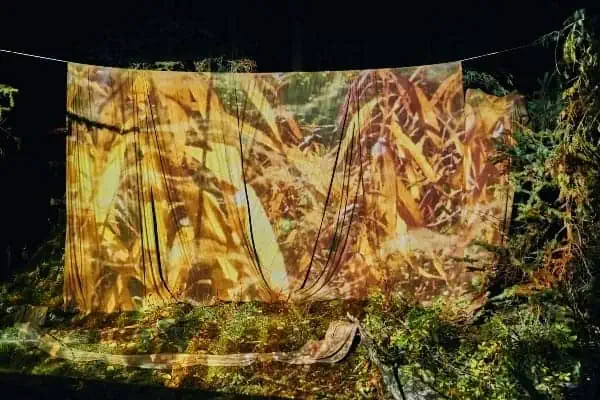Dawson man-about-town Greg Hakonson is always an enthusiastic guy, putting his energy into construction, cooking and the local arts scene – he’s been a driving force behind the Dawson City Arts Society for more than a decade.
But ask him about the Trekke® Lumbar Lift, a device he invented to relieve lower back pain, and he gets particularly animated.
Especially when he tells the story of an unexpected sales call. This summer Diana Andrew, who owns Dancing Moose Gifts and stocks the Trekke, called Hakonson to custom-fit one for an American tourist.
“The guy told me he’d had chronic pain for years. Once the Trekke was on and inflated, he danced around the store and said he wasn’t leaving without it,” says Hakonson with a grin.
Before driving away in his RV with the Trekke snug around his waist, the tourist told Hakonson he couldn’t remember the last time he’d been pain-free.
“It’s comfortable and it works,” says the inventor. His belief in the product has driven him for 12 years.
Hakonson is not a certified engineer, but he laughs when I ask if the Trekke is his first invention. During his 31-year mining career, he designed, innovated and built gold recovery plants, materials handling devices and gold concentration equipment.
He also handled a lot of heavy equipment, exacerbating his degenerative spinal arthritis. He could get relief from lower back pain only by spending two hours in traction in Whitehorse – hardly a convenient option.
Hakonson searched for a “mobile traction device,” but at the time there was nothing on the market. So he decided to invent one. In 1998, he came up with the proof of concept – conceptualizing and proving the design principles for what would become the Trekke – in his basement.
How does it work?
Trekke is made from a proprietary fabric designed by Hakonson and manufactured by a speciality company in Garden City, New York. The soft, woven polyester conceals an ultra-thin blown-film urethane “bladder” that must be pre-inflated with the manual pump included in the package.
Once clipped securely around the waist using two interior belts adjusted to fit at the waist and lower ribs, the Trekke can be further inflated with the pump to stretch vertically. This “unloads” upper torso weight from the lumbar vertebrae and discs, reducing or eliminating pain caused by compression in the lower back.
To get from proof of concept to final product, Hakonson went through three or four phases of development with support from the Yukon and federal governments. In 2004 he formed a company, PneuVation Medical, to raise capital through private shareholders – family, friends and angel investors.
After more development and prototype testing, in 2008 the lift was ready for production south of the border.
What Hakonson didn’t anticipate was a 24-month commercialization process that would eat up the quarter million dollars he had set aside for marketing. In August 2010, the Trekke® Lumbar Lift finally launched online, with a focus on the American market.
Conservative estimates indicate a $2 billion annual market for chronic back pain in the United States, Hakonson notes. Although the Trekke is selling there, and orders have also shipped to Canada, Australia and even Mongolia, sales have been soft overall.
By the time TLL went on sale, there were a number of other “ambulatory spinal unloading” devices on the market.
None uses the same cutting-edge fabric and technology as the Trekke, but the most successful direct competitor, Disk Dr., sells its inflatable Waist Support Belt online for about one-third the price of Trekke.
“I was told early on that once you have the product you’re only 25 percent there. It doesn’t seem to matter about the product, it just matters how you market it,” says Hakonson, who is at a low point right now.
Yet those who use the Trekke are elated.
Two years ago, local filmmaker Lulu Keating was in a car accident that left her with a compression fracture in her back. Once she’d healed enough to walk, she was fitted with a prototype of the lift.
Keating says the relief from pain was immediate. And the long-term salvation is that thanks to the Trekke, she can continue to work 12-hour shooting days without being distracted by pain.
Hakonson is knocking on the doors of reputable orthopaedics distributors around the world. Aside from a few encouraging meetings with a company based in Iceland, no one’s biting.
This frustrates Hakonson, who says that the original goal 12 years ago was to get a product on the market in 2 years tops, and use the proceeds to fund a product development company, ultimately bringing manufacturing jobs to the Yukon.
The die-hard entrepreneur is still optimistic this will happen once the Trekke gets off the ground. And he has a file folder full of other ideas he’s itching to get at.
In the meantime, he’s busy building houses. But that’s another story.

